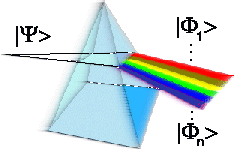Electrophoresis 20, 2493-2500 (1999)
Leonardo De Boni, Lilian T. C. França, Hans-Peter H. Grieneisen, Maciej Janowicz, Tarso B. L. Kist, Angelica R. Consiglio, Júlio R. Schoffen, Valter Stefani, Carlos Termignoni
The phenomenon of electrophoresis in free solution has been studied theoretically down to the molecular level for decades. In addition, intermolecular photo-induced proton transfer reactions, which occur in a wide class of molecules (phenols and aminoarenes) as well as proteins (green fluorescent protein), were also studied extensively. However, the study of the effect of light-induced electrophoretic mobility changes of the analytes in electrophoresis was begun only recently. In the present work, capillary zone electrophoresis was chosen as the environment to measure the magnitude of these electrophoretic mobility shifts induced by light. Background electrolytes (running electrolytes) with high refractive indices were developed, allowing the capillary to work like an optical fiber. The experimental conditions for obtaining stable coupling and guided laser light along the liquid core are discussed. Experimental evidence of band compression is observed, leading to a solitary wave behavior of the analyte band (2-naphthol). These solitary waves result from competition between thermal diffusion (dispersion mechanism) and a nonlinear (band compression) effect due to the combined electrophoresis phenomenon and absorption of guided light by the molecules of the band (which are subjected to a reversible intermolecular proton transfer reaction as one of their decay routes). The possibilities of applying this effect to different methods and techniques are also discussed.
skip to main |
skip to sidebar

Quantum Optics Group, Institute of Physics, Polish Academy of Sciences

Browse publications by author
- Mariusz Gajda (30)
- Arkadiusz Orłowski (29)
- Magdalena Załuska-Kotur (20)
- Maciej Janowicz (16)
- Marian Rusek (16)
- Jan Mostowski (14)
- Zofia Białynicka-Birula (10)
- Władysław Żakowicz (9)
- Emilia Witkowska (2)
- Tomasz Świsłocki (2)
- Filip Krzyżewski (1)
- Jaroslaw Gocałek (1)
- Łukasz Badowski (1)